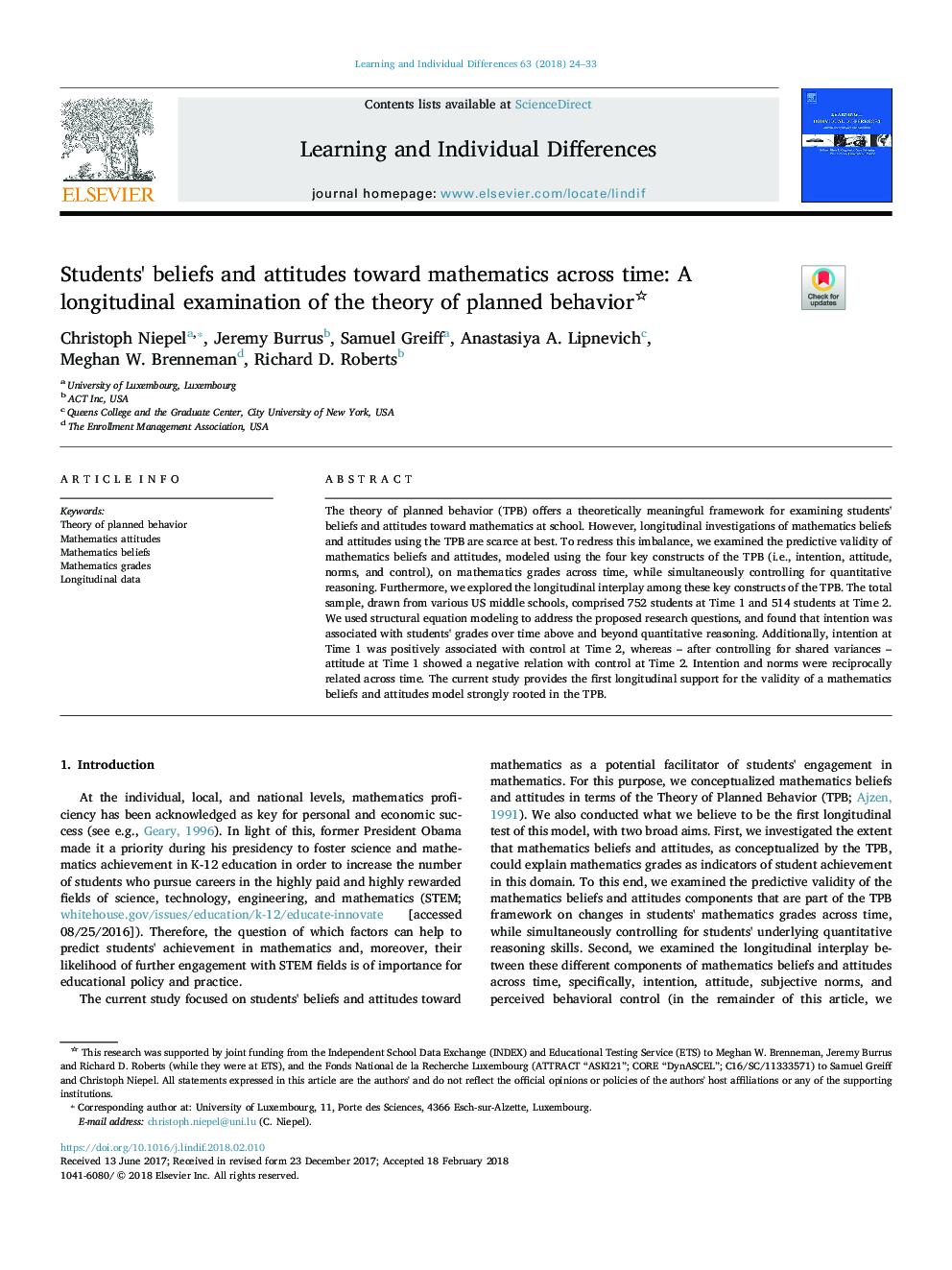| Article ID | Journal | Published Year | Pages | File Type |
|---|---|---|---|---|
| 6844395 | Learning and Individual Differences | 2018 | 10 Pages |
Abstract
The theory of planned behavior (TPB) offers a theoretically meaningful framework for examining students' beliefs and attitudes toward mathematics at school. However, longitudinal investigations of mathematics beliefs and attitudes using the TPB are scarce at best. To redress this imbalance, we examined the predictive validity of mathematics beliefs and attitudes, modeled using the four key constructs of the TPB (i.e., intention, attitude, norms, and control), on mathematics grades across time, while simultaneously controlling for quantitative reasoning. Furthermore, we explored the longitudinal interplay among these key constructs of the TPB. The total sample, drawn from various US middle schools, comprised 752 students at Time 1 and 514 students at Time 2. We used structural equation modeling to address the proposed research questions, and found that intention was associated with students' grades over time above and beyond quantitative reasoning. Additionally, intention at Time 1 was positively associated with control at Time 2, whereas - after controlling for shared variances - attitude at Time 1 showed a negative relation with control at Time 2. Intention and norms were reciprocally related across time. The current study provides the first longitudinal support for the validity of a mathematics beliefs and attitudes model strongly rooted in the TPB.
Related Topics
Social Sciences and Humanities
Psychology
Developmental and Educational Psychology
Authors
Christoph Niepel, Jeremy Burrus, Samuel Greiff, Anastasiya A. Lipnevich, Meghan W. Brenneman, Richard D. Roberts,
